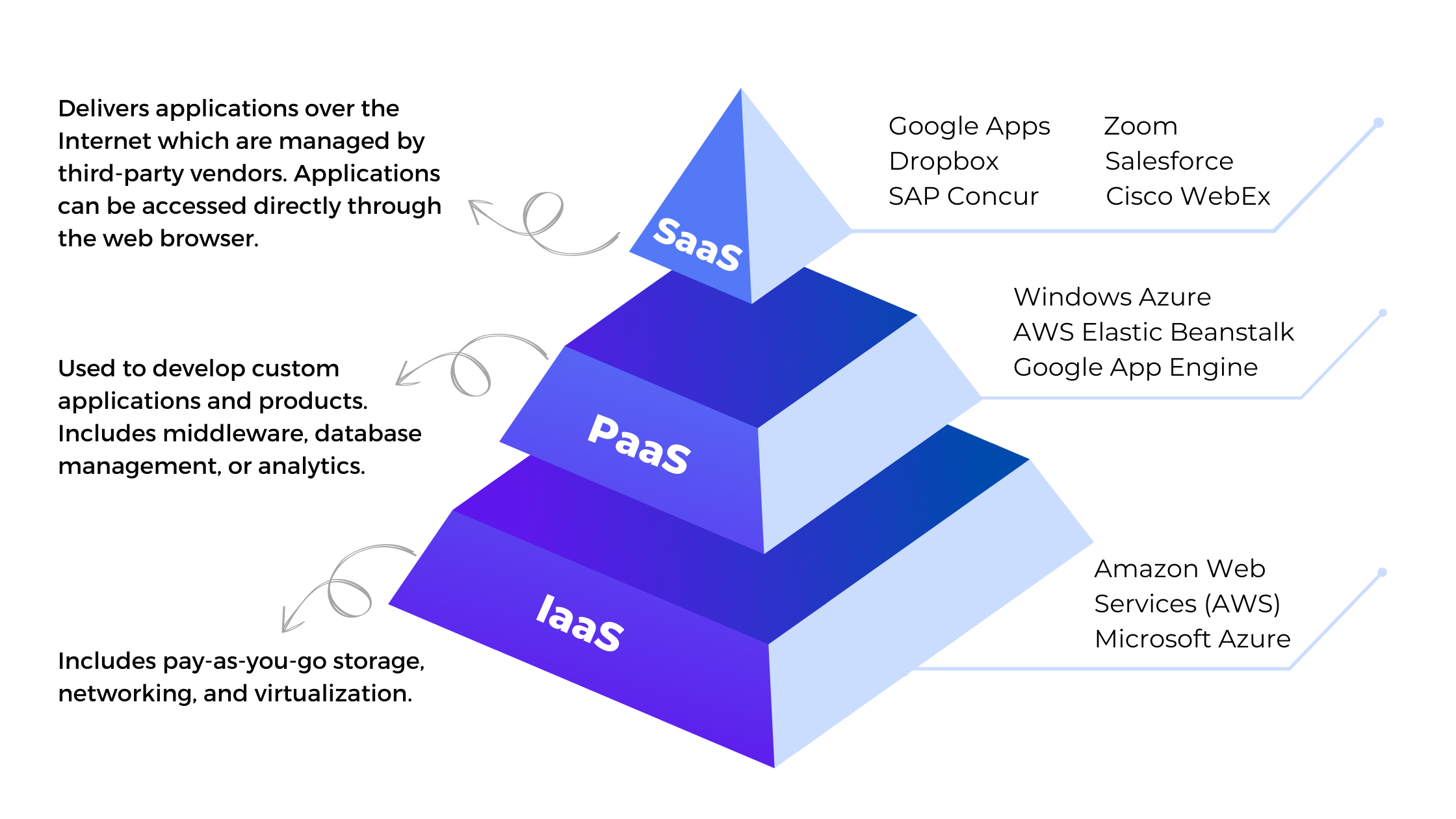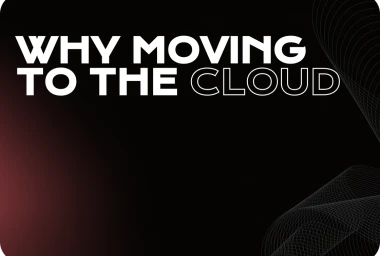Businesses are seizing on cloud technologies seeing them as the key to successful digitalization. The coronavirus pandemic has only strengthened this trend. According to ITPortal, a pandemic reality has contributed to extended use of the cloud for data storage and processing. Indeed, more companies are now moving from a piece-meal online strategy to a more complex digital approach with the cloud at its core. And it’s not surprising: those who accept changes rapidly and are able to augment their capabilities become the winners of tomorrow.
Cloud networking for online businesses means the ability to scale and adapt quickly, streamline multiple operations, use innovative advantages, and reduce costs. Cloud technologies not only help go through the current world crisis but promote effective growth. This is confirmed by the Future Systems report stating that companies investing in cloud technologies achieve more financial growth. In fact, 95% of business leaders use cloud services. Here are only some successful examples:
- Netflix. Cloud service helped Netflix to withstand an exponential growth of viewers when its global expansion started to pick up the pace. Today, Netflix uses AWS for almost all computing and storage needs, databases, analytics, video transcoding, etc.
- eBay. The company moved its infrastructure to the cloud in 2012. They migrated in half a year - it’s very fast considering that eBay has more than one billion listings. Instead of using existing Azure IaaS or AWS solutions, eBay invented their own OpenStack-based cloud thus gaining more control and flexibility.
- Instagram. The app began in the public AWS cloud. After Facebook’s acquisition in 2012, Instagram migrated its photos and videos to Facebook’s private cloud.
- Pinterest. This app is a cloud pioneer: it’s been using cloud computing from the very beginning. As Pinterest continues to grow, AWS cloud service helps keep up with website traffic.
A Cloud-Centric Web Development
With cloud networking, software developers have got the ability to create various applications and services without messing around with scalability and deployment issues. Cloud computing provides a stack of different solutions that ease and speed up a whole development cycle. Before we dive into different cloud solutions presented on the market, let’s find out in more detail why businesses tend to migrate to the cloud.
- Cost-Saving
Migrating to the cloud service lets you reduce costs since there is no need to keep expensive equipment and software, maintain a staff of engineers and technicians to maintain local IT structures and spend money on electricity and server cooling. When the company's infrastructure is deployed in the cloud, the client pays only for the rent of computing power and software licenses, if necessary. Moreover, your DevOps specialists don’t need to maintain and back up hardware and software, thus reducing operational costs as well. As a rule, cloud services have a flexible payment plan when you “pay-as-you-go”. It’s very convenient, especially at the start, when you are trying to figure out how the service is working and which features are essential for your project.
- Scalability
Compared to traditional hosting where you have to choose, buy, install and configure the equipment that will run every node in your system, cloud hosting makes it possible to quickly and easily scale any part of the infrastructure. By choosing a cloud, you can automatically increase the hardware capacity by adding processor cores or even new servers for your web project during peak loads. Vice versa, it’s possible to lower capacity when traffic falls. Cloud services enable developers to quickly create new environments - from websites to virtual servers and databases. Finally, with the advent of microservices, it’s possible to develop a modular web application with separate modules located on different servers.
- Wide Coverage
Clouds let you access your application anywhere and anytime because they cover different regions and countries. Rather than relying on one site to host your application or wasting resources to build additional sites, the cloud allows you to place an application geographically closer to your customers. Through traffic management and replication, cloud applications will provide customers with the best performance no matter where those customers are located. Moreover, such accessibility allows businesses to offer more flexible time hours for their employers to support remote work.
- Security
For many conservative website owners, security concern remains one of the roadblocks to public cloud migration. In reality, top cloud networking providers do their utmost to support a high level of data security. A modern data center is always a closed area with a multi-level security system, video surveillance, and access control - it is almost impossible to enter such a territory unnoticed. Moreover, cloud providers never keep all of their customers' information on one physical server and always have full duplication of data. Hacking the cloud infrastructure from the outside, through network connections, is also unlikely. Prominent cloud providers use powerful, expensive software to protect against hacker attacks. Anyway, if you are seeking the most secure option, go for private cloud storage dedicated to your single organization, such as the Amazon Virtual Private Cloud service. Though it’s a more costly option, it provides the highest level of security. You can also go for a hybrid cloud environment where you can use both public and private clouds for different types of data.
Choosing the Right Cloud Model for Your Business
Picking up effective technology for your business needs is always complicated. When it comes to cloud services, understanding the difference between existing models is important in order to get maximum benefits. Here we go:
Software as a Service (SaaS)
It’s the most popular and simple cloud model. With SaaS, an application is hosted on a remote server and managed by a third-party provider. By choosing SaaS, clients work with a ready-made solution online. They choose a subscription plan and can access an application through a web browser. The simplest example of SaaS is Google Docs, a free document service with no media, drivers, or installations. Use SaaS for web applications that require web and mobile access, for short-term projects or e-commerce websites. With the help of DevOps engineers, SaaS start-ups tend to achieve strategic goals faster by offering a better user experience. DevOps automation is needed to properly build a cloud environment, improve deployment speed and set up a continuous application delivery.
SaaS examples: BigCommerce, Salesforce, Dropbox, MailChimp, ZenDesk, Slack, Hubspot.
Platform as a Service (PaaS)
PaaS is a cloud model when a provider offers a virtual machine and frameworks enabling customers (in our case developers) to develop, run and manage business applications. In order to do this, they do not need to build and maintain the infrastructure. The PaaS model provides key services such as application hosting, Java development, design, testing, web service integration, etc. The PaaS model allows developers to write, test and deploy code faster, focusing more on the creative side of software development. The same as with SaaS, customers pay for PaaS services as they are used. Use PaaS if you want to create a unique application without big financial investments. PaaS is widely used for API development and management, business analysis, communication (voice, video, messengers), database, Internet of things, and master data management. When a company decides moving to the PaaS model, it has to revise how they deliver software. In this situation, DevOps specialists may come in handy: by choosing the best tools and resources they help migrate a workflow into the cloud solution in the most smooth and cost-effective way.
PaaS examples: AWS Elastic Beanstalk, Google App Engine, Heroku, Windows Azure, OpenShift, Apache Stratos, Magento Commerce Cloud, SQL servers.
Infrastructure as a Service (IaaS)
IaaS is the simplest cloud option for businesses that provides virtual resources to companies over the Internet, the same as a traditional data center. With the IaaS model, a company migrates its hardware (servers, data storage) to the cloud instead of purchasing and maintaining its own infrastructure. When choosing an IaaS model for your business, you have to be aware that in this case, a cloud provider bears responsibility for the servers, hard drives, networking, and storage, while your system administrator has to manage databases, applications, runtime, and security issues. This is an ideal model for companies that may experience temporarily high loads - for example, retail stores during sales. The IaaS model is also suitable for small and medium businesses that are growing and may require more resources in the future. Moving to an IaaS platform can be challenging because not all enterprise applications are written for the cloud. A DevOps team can help you make things work by choosing the right cloud solution equipped with needed developer tools, scalable databases, and management services.
IaaS examples: Amazon Web Services, DigitalOcean, Rackspace, Cisco Metapod, Microsoft Azure, Google Compute Engine, Linode

Cloud Migration Challenges
The process of cloud migration can benefit almost any business, but it’s not all that simple. The security concern is the first doubt related to cloud adoption today. For many companies, privacy and regulatory issues, as well as cloud compliance are the main obstacles, in most cases due to ignorance and misunderstanding of details. Indeed, migration to the cloud requires careful planning, deep understanding of different cloud platforms’ intricacies. Another challenge many companies face is the lack of people that have expertise in cloud technologies. DevOps engineers whose significance we emphasized in the previous post, are those people who can help you migrate your business to the cloud with maximum benefit and loss of your resources. At Covent IT, we can provide you with such experts, save your time and make cloud migration smooth and efficient.
Takeaways
Against the backdrop of a global pandemic, the popularity of cloud services is growing exponentially. And this is not surprising, since now even small and medium-sized businesses can get ahead thanks to the competent use of cloud capabilities. Cloud systems have contributed to better ways of monitoring systems, accessing resources and multiple servers as well as scaling applications. If used correctly, cloud can offer the best value vs. performance. If you plan to expand your business and think about migrating to the cloud, get in touch with us. We’ll talk through your options and find the best solution for your business.










